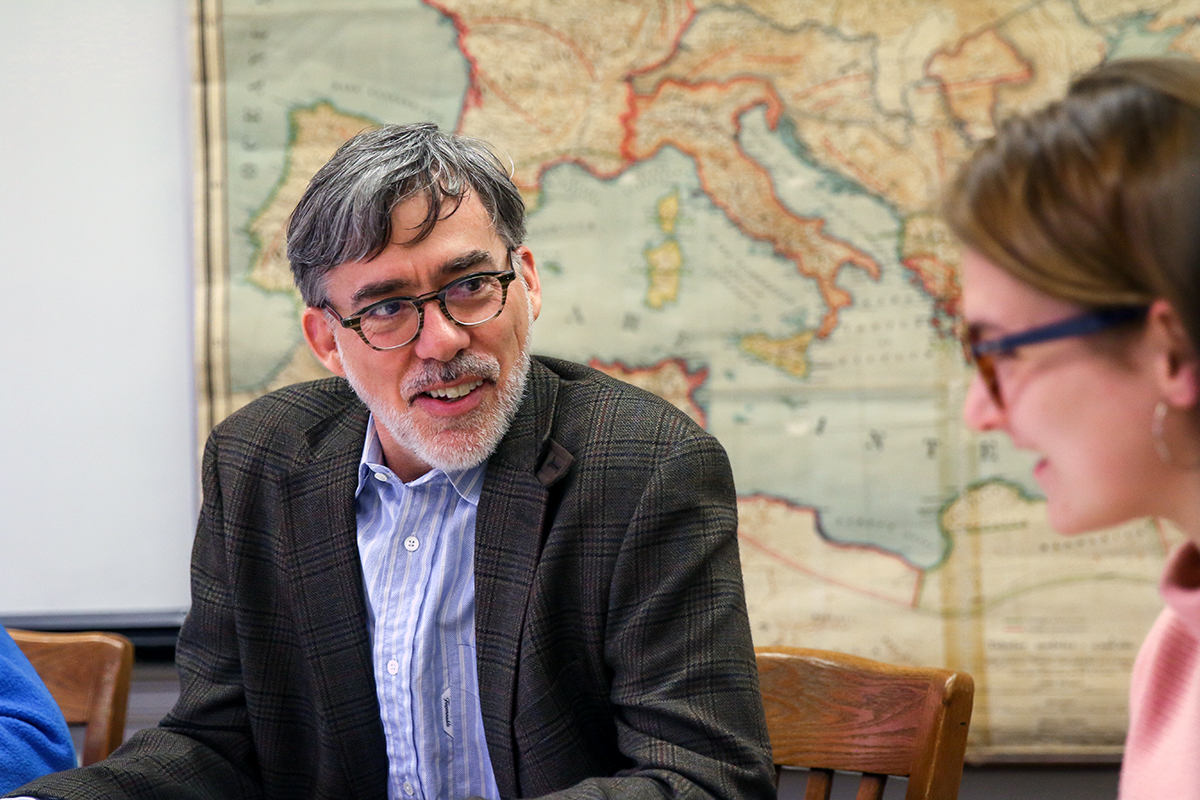A bespoke curriculum
It was an understanding of the refined needs of Exonians that led Hartnett to undertake the writing of his own textbook, tailored specifically to his first-year Greek students. “The creation of the book came out of a sense that no existing textbook was perfectly suited to our students,” he says. “We were trying to create something that works exactly for our kids and hopefully at other schools, too.”
Hartnett’s approach to teaching classical languages dives well beyond simply translating ancient texts and seeks to examine the lives and surroundings of the authors of some of the most enduring works of all time. “To study people from a different culture, that spoke a different language and lived a long time ago is incredibly sublime, he says. “It gives our kids a perspective on what it means to be human.”
Hartnett has also produced a supplemental text titled By Roman Hands: Inscriptions and Graffiti for Students of Latin, which dissects preserved public etchings in ancient Rome, providing students with a glimpse into the daily lives of average Romans. “Sometimes it can be a while before students feel like they’re interfacing with real Romans. My goal with the text was to have kids, from the first day of class, be able to read actual Latin written by real Romans,” he says. “It’s about recognizing the humanity of people that seem very, very different from us.”

